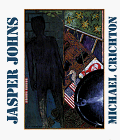
|
|
This little book has an essay at the front by Leo Castelli, the legendary New York art dealer who in the late 1950s snapped up the young Jasper Johns for his stable of new artists--nearly all of whom became wildly successful. Most of the rest of the book is like a snapshot album, immersing the reader in pictures of Johns, his studio, his paintings, and historical artifacts. These last include the Art News magazine cover of 1958 that put Johns on the map. Speaking of maps, there are reproductions of Johns's famous U.S. maps, and also of his targets and the late double shadow, crosshatch paintings. In the back of the book, there is a brief chronology, plus captions explaining the preceding plates. It's a surprisingly good idea to place them at the end--nicely non-intrusive. Read Castelli's essay to get a sense of the renowned and perspicacious Leo Castelli, rather than for what it tells you about Johns. For that, there are hundreds of other sources. One startlingly thoughtful analysis of Johns's work appears in James Fenton's book Leonardo's Nephew. Castelli reveals that MoMA's Tom Hess had "a friend" buy one of Johns's early American flag paintings for the museum in order to bypass a conservative acquisitions committee. Fenton tells us it was the architect Philip Johnson, and that it then took 15 years for MoMA to wrest it from Johnson's appreciative grasp. --Peggy Moorman --This text refers to the Hardcover edition. Ingram Pairing the talents of a leading American artist and the author of Jurassic Park, a collection of intellectual works featuring the artist's use of puns, optical illusion, and embedded images is accompanied by analytical text.
|
|
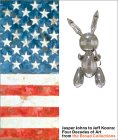 |
Jasper Johns to Jeff Koons: Four Decades of Art from the Broad Collections Avid art collectors and philanthropists Eli and Edythe Broad have assembled a diverse collection of work from big names in contemporary art, as revealed by this book, published in conjunction with a Los Angeles County Museum of Art exhibition drawn from their collections. An interview with the Broads, disclosing their approach to collecting for both investment and edification, is followed by four contextual essays by prominent curators and academics, each punctuated by extensive sections of color plates. Since the Broads collected widely in the work of Cy Twombly, Roy Lichtenstein, Cindy Sherman, Jean-Michel Basquiat, Anselm Kiefer, and many others, the writers are able to outline several strains of recent art history without straying from the collection at hand. But the essays are incidental in comparison to the full-page reproductions on heavy stock, which will entice those curious about the above-mentioned artists, as well as about Californians Ed Ruscha and Sharon Lockhardt. A checklist of works further defines the exhibition. This is a much more complete overview of this important collection than Compassion and Protest: Recent Social and Political Art from Eli Broad Family Foundation (Abbeville, 1991), a thematic work that focused on 18 artists from the 1980s. Recommended for contemporary art collections. Carolyn Kuebler, "Library Journal" |
|
 |
Jasper Johns : Privileged Information Jasper Johns is among the most eminent--and certainly among the most successful--of American postwar artists. Yet for all the notoriety of his work, from the famous "Flag" of 1954-55 to his recent "Seasons" series, Johns himself remains an opaque figure. Now Jill Johnston claims to have found the the key: a hidden, recurrent motif in his paintings, which transforms Johns into "a secret autobiographer." Some of the conclusions she derives from this painterly Rosetta stone are stretched a mite thin. But much of the time her arguments are smart and provocative. And they certainly managed to rile the artist himself, who forbade the publisher from reproducing any of his work in Privileged Information.
|
|
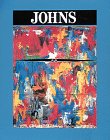 |
Johns (Great Modern Masters Series)
|
|
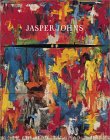 |
Jasper Johns: Loans From the Artist At the pinnacle of Abstract Expressionism, then 24-year-old Jasper Johns covered an entire canvas with a painted version of the American flag, and altered postwar American art forever. In just one work, a work which hung on the wall both like any other flag and like any other abstract painting, Johns had summed up the positions of Abstract Expressionism and European Concrete Art, and had pointed the way for both geometric hard-edge painting and American Pop Art. Nevertheless, Johns cannot be reduced to this one, iconic artwork. With a view toward revealing the complexity and grace of his oeuvre, this book presents oil and object paintings, and drawings from the estate of the artist, and allows a focused view onto the pictorial workshop and world of ideas of Jasper Johns.
|
|
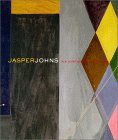 |
Jasper Johns : New Paintings and Works on Paper Though Jasper Johns is probably most famous for the now-iconic flag paintings he made during the 1950s, he continues to produce great paintings today. This latest body of work--first shown at the San Francisco Museum of Modern Art--dates to the very late '90s. And this beautifully produced exhibition catalog offers readers a glimpse at and insight into the work called the Bridge series. There is a loneliness to these paintings, with their dark palette and single strings of color set against expansive gray spaces. The solitary strings allude to the cables of suspension bridges and hang in front of the pictures with a swooped, gravity-induced curve. The dark, mysterious quality of the canvasses is brightened somewhat by details like that of a harlequin's diamond pattern painted in muted colors. Childhood imagery appears here, too--a dragon figure from a long ago Halloween, for one. Though at first glance these moody, memory-imbued paintings seem very different from much of the painter's other work, Johns's trademark themes are not entirely absent. His predilection for playing up the sculptural elements of painting is evident in the pieces of wood framing he's attached to these and the illusion of painted wood framing around the edges of the works. While the Bridge series works represent something of a departure for Johns, the paintings maintain a strong connection to the motifs he's investigated throughout his career. This is a meditative and fascinating art book experience. [86 pages, 13 full-color plates, 15 black-and-white illustrations
|
|
 |
The United States of Jasper Johns Art critic and poet John Yau closely examines the identity and meaning behind Jasper Johns's recent paintings. Johns's work has earned a prominent place for itself in art history since it was first exhibited in 1958. Yau's brilliant analysis of two of Johns's best-known early works, Flag (1955), and Map (1963), provides us with unique insights into his latest paintings, two of which are reproduced here for the first time. Johns is considered both the founder of Pop Art and Minimalism, as well as a hermetic figure whose work has confounded critics for nearly forty years. Yau's view of Johns's paintings not only makes many aspects of the artist's work accessible for the first time, but also reveals the profoundly emotional tenor of this supposedly aloof figure. Yau's descriptions and meditations are united with Johns's own thoughts, culled from conversations between poet and artist over the past ten years. The result is fresh insight into an artist whose work has beguiled viewers for nearly forty years. |






